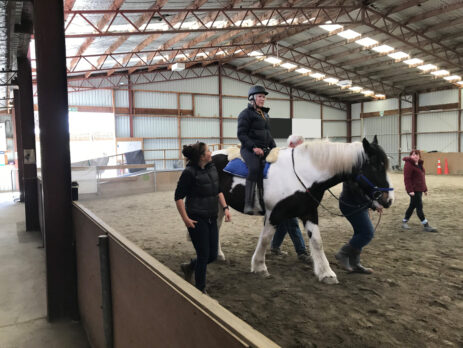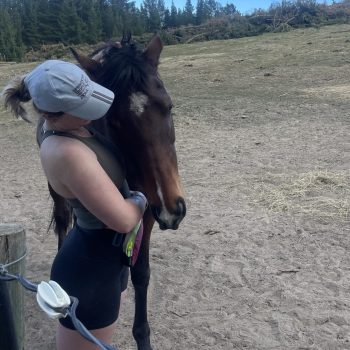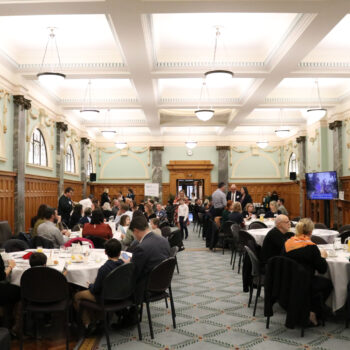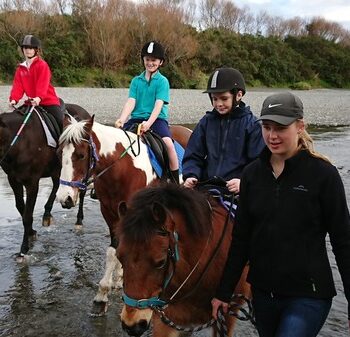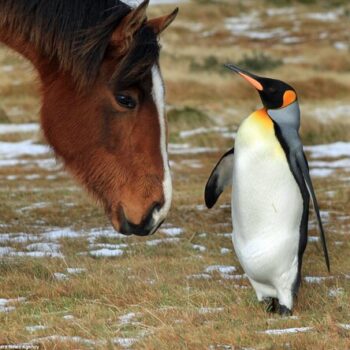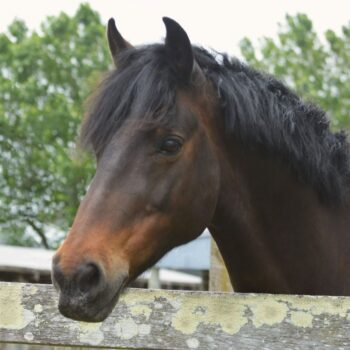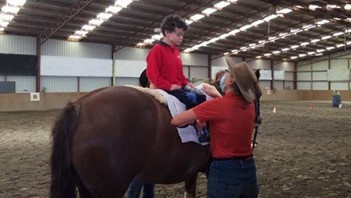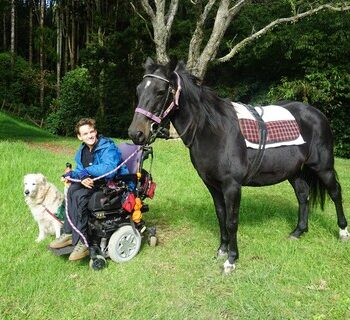Tessa improves her stamina
From fear of falling to independently trotting – Tessa was able to see huge improvements!
Tessa experienced a stroke. Here is her story about how she worked hard to gain back the functionality she had lost, and how therapeutic riding helped her to get there.
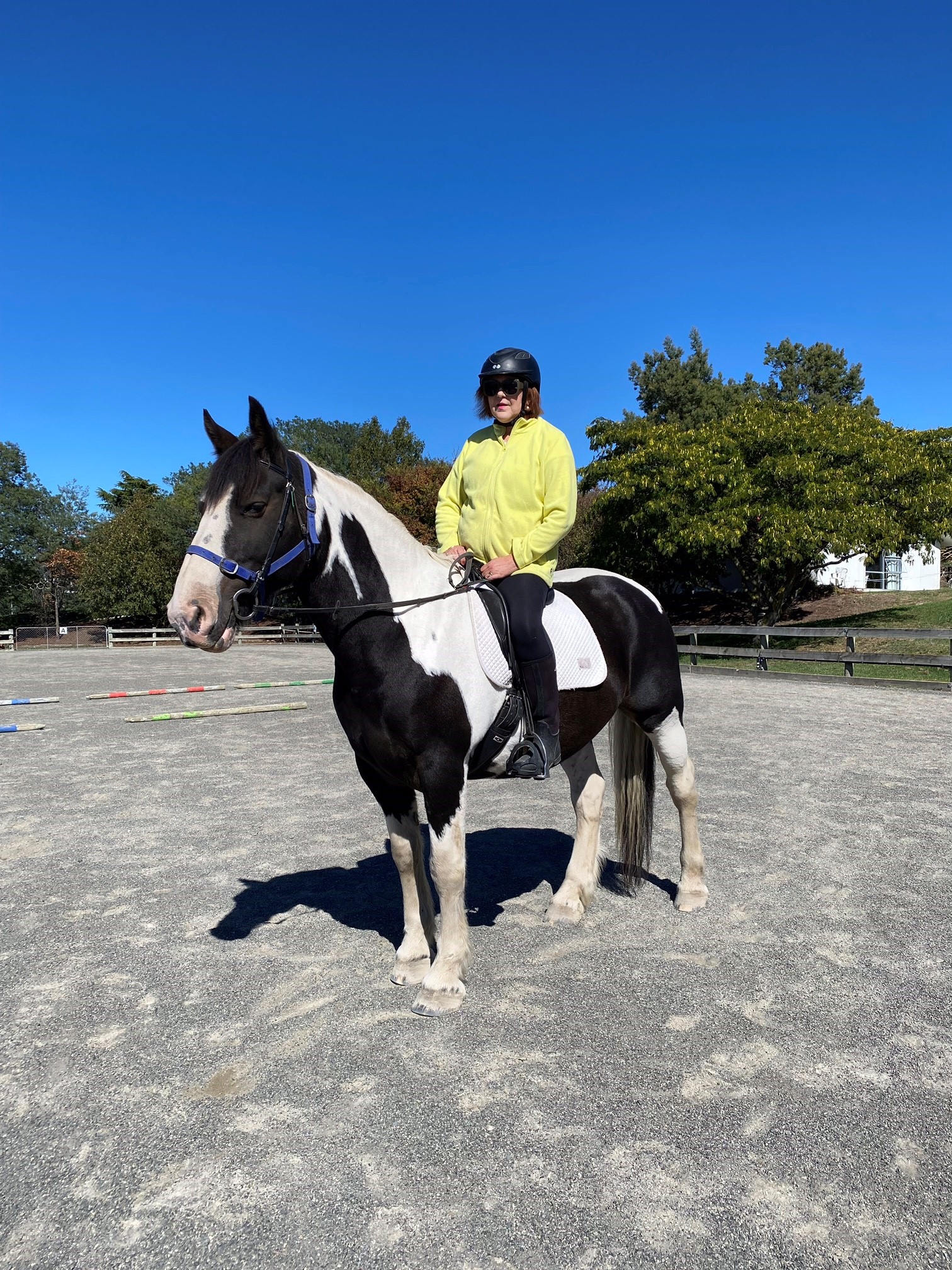
“It was just before midnight. When I went to get out of bed and fell to the ground, I realised I couldn’t actually get myself up again.
My husband tried to help me out and he couldn’t do it either and said “I think you’ve had a stroke and I have to get some help”. And I’m going “No, no, no, no. I’m far too young to have had a stroke”. And I was really angry. When I heard him ringing for an ambulance I could hear him saying “I think my wife has had a stroke”. They would have heard me in the background saying “No, I’m too young to have had a stroke”.
It turns out I wasn’t too young to have had a stroke.
When I got to the hospital, they carried out scans and found a large clot on the right-hand side of my brain, just above my ear. Pictures were sent to specialists at two more hospitals, and it was agreed that I was a candidate for clot retrieval. I had no idea what that meant. But within an hour I was on a fixed wing plane on my way to a larger hospital where I was in surgery within an hour of arriving on the ground. They did indeed retrieve the clot and sucked it away from the brain. When I woke up I had suffered some long-term damage.
Ironically clots which are on the right-hand side of the brain tend to affect the left-hand side of the body and vice versa. So the impacts that I felt were as follows: no use of my left arm or hand – and my left leg was pretty useless as well. I could talk and understand, so that was positive. And I could eat – even if everything kept falling out the left-hand side of my mouth. I spent five days in the Intensive Care Unit and was then flown back to the smaller hospital for rehabilitation.
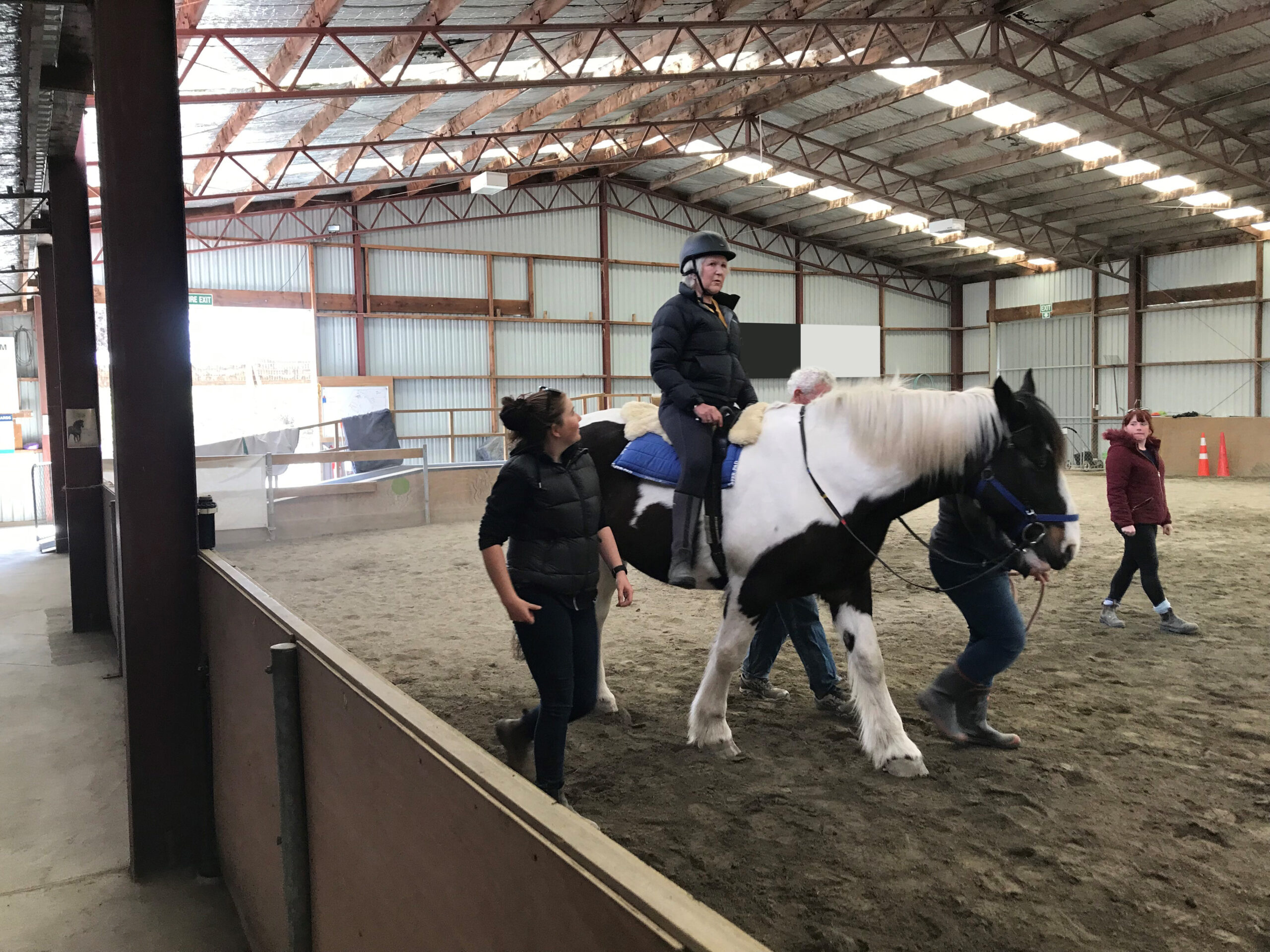
The rehabilitation took the next 10 weeks, so it was a very long period of time. I had to learn to walk again, and to use my arm, and to do basic things such as butter a slice of toast, make myself a cup of coffee, dress myself, and wash myself. All those things I had to learn from scratch. Not easy when you’re 61 years old!
Eventually though, after 10 weeks, I came home. It was the best day ever! It was Easter. So my family was here, my dogs were very happy to see me, and while I still had lingering side effects from the stroke, I was far better than I had been weeks beforehand. I could even walk up the stairs of our two-storey house – which was just as well because the bedrooms are upstairs. It could otherwise have been a very cold night on the couch!”
For Tessa, going to Riding for the Disabled was very important for her recovery. There are so many other riders out there who want to access riding.
“Within a month of coming home, a friend who was a volunteer at RDA suggested that I should apply for a place on one of the riding sessions. Which I did. And after finally getting doctors’ certificates completed and filling out other paperwork, I started as a student at the RDA.
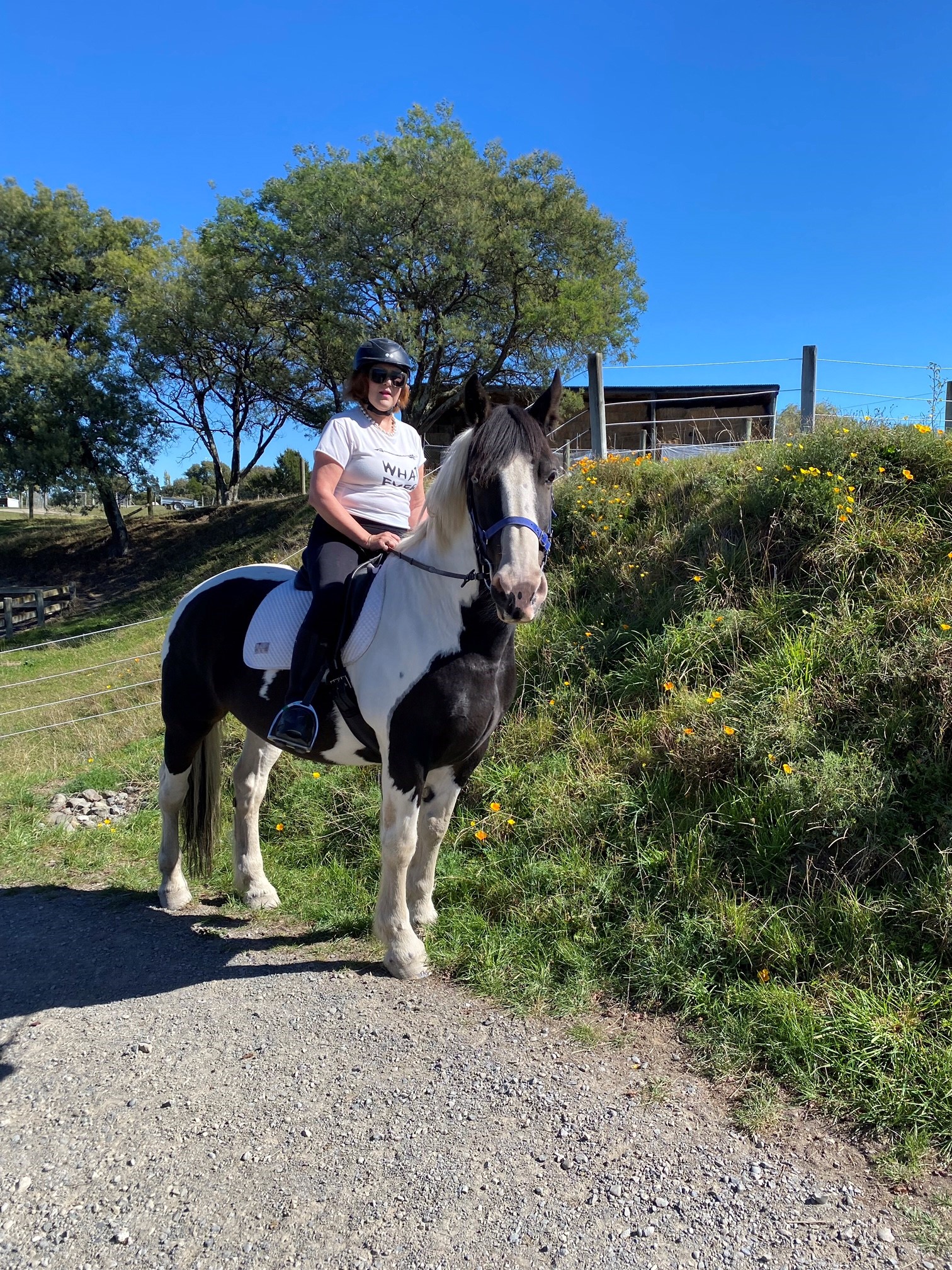
When talking with the coach prior to starting, we made the decision not to ride with a saddle but to ride with just a sheepskin as I really wanted to concentrate on my balance particularly, and to strengthen my core as I knew that that was really important for me going forward. So for the whole first term, I was riding on a sheepskin. And I have to say that it really did help. I did feel my core had strengthened to the point that when I got down on hands and knees, I could actually push myself up to an upright position if I had something to put pressure on, such as a chair or a table.
My balance was immensely better, especially around uneven surfaces. Whereas before I was very nervous and wouldn’t have attempted to walk on uneven surfaces by myself unless I had somebody holding me, I was able to walk around the garden of our property and around other people’s gardens without fear of falling.”
Tessa tells us about the benefits of riding.
“There were other, more minor, positives. I had not been able to use my left arm after I came out of hospital because I had a sub-located or dislocated shoulder. There was pain in my left arm if I tried to do anything. For example, raising my left arm mere centimetres from my waist was exceptionally painful. So one of the exercises while riding in the arena was to ride with the reins in one hand and my left arm out 90 degrees. It was painful, but it was also strengthening my arm every time I did it and I noticed that markedly. After a few weeks, my whole face was able to turn. I was asked to sit backwards on the sheepskin. And the effects physically were very noticeable.
But I also think that there were many benefits. Sure, there were the physical benefits – that was great. But there were also benefits to me such as confidence and feeling mentally stronger. I had been able to ride before I had my stroke – and all of a sudden I was riding again! It was the only thing that I had done before the stroke that I could still do, and that meant a huge amount to me. It was like a massive injection of dopamine every time I went out to ride. My husband said that I started smiling two days before my riding session and didn’t stop for two days after. So, mentally, being able to do something that I’d been able to do beforehand was massive for my rehabilitation. This is something that cannot be overlooked – the impact of how good you feel after looking after a horse, or after riding.
Later in the year, I moved into a saddle and my goal was independent trotting in the arena. And free riding around the farm. My arm was much better, so I had far better control over the reins, but my left hand still couldn’t clench enough to ensure the reins were tight in my hand and my coach – who is our guardian angel at the RDA – gave me some padded reins which made all the difference.”
Tessa noticed how much help her coach gave her.
“Now the reins don’t slip through my hands when I’m riding. I can actually grip hold of them even if I can’t clench my fist completely. So this term, I have been doing independent trotting and it’s actually been a lot more physical for me. I think this is good because I need to be more physical. It’s tested my stamina and my muscle strength, which is all positive.
Within three weeks of being in the saddle I was able to do trotting on a lead, and within five weeks I was independent trotting. So that was my goal achieved for the term!
One of the things about RDA that most people don’t realise is that it does work for adults as well as children. Most people are exceptionally surprised to hear that I am going to RDA because they think it’s only for younger people, rather than adults. But the serious condition I was in, the trauma left behind by the stroke, meant that I was experiencing difficulties and needing to work hard on rehabilitation skills.
My experience is no different than a number of other people in New Zealand who have experienced a stroke. Determination is needed to gain back the functionality that you had before.
The riding I did was part of my rehabilitation. The horse does the work for you, but you have to work with the horse. And it’s not just the riding. It’s brushing the horse down afterwards, or removing the gear, reins, saddle mats etc. All of this requires fine motor skills. These tasks help to strengthen your muscles, and also to reassure you that you are able to do things still.
I can’t speak highly enough of RDA. It has changed my life since the stroke for the better. And I will be forever grateful.”
Your support makes all the difference. Without you, riders will be waiting for longer before they can access a riding session with a qualified coach.
Your support helps riders like Tessa to experience wonderful outcomes from riding.

